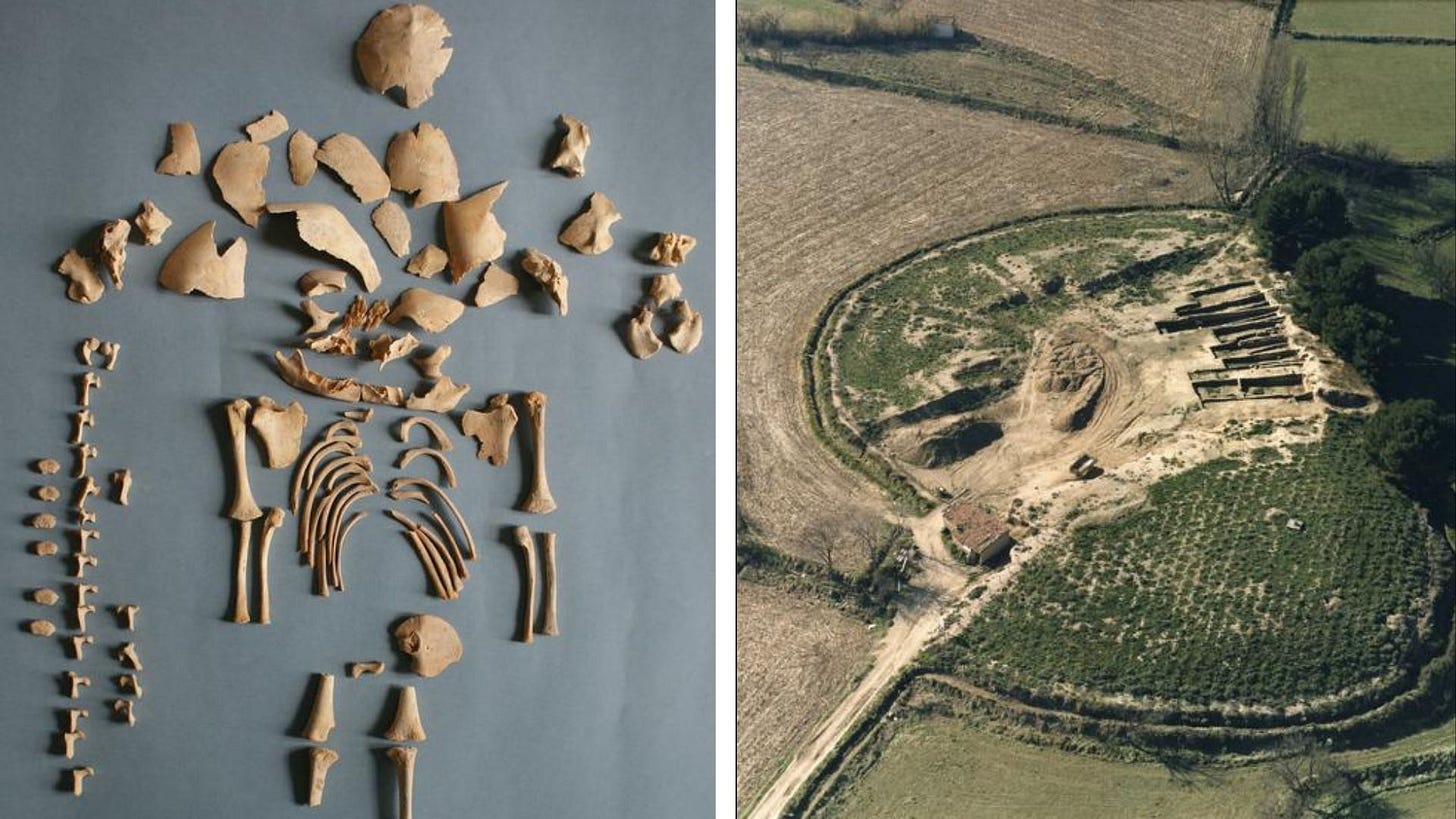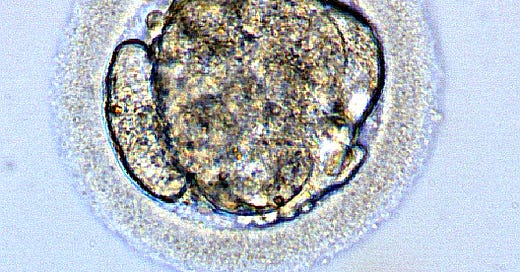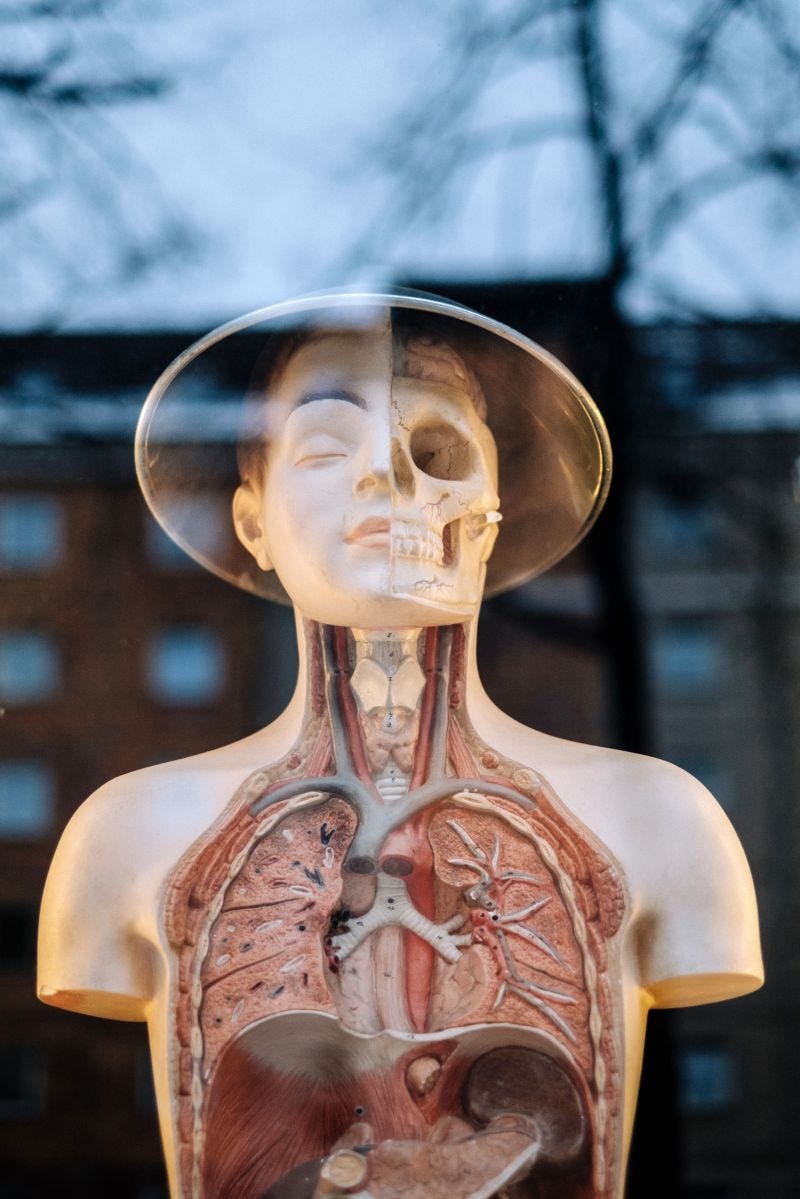Sci-Ed Update 314
Endometriosis breakthroughs, cell therapy for melanoma, toilet access is public health, prehistoric trisomy 21, new allergy drug, scientific illustration, organ system debate, when life begins, more!
17 Timepoints When a Human Life Begins: 2024 Version in the Wake of the Alabama Ruling
I wish that I could stop reposting this essay – I do so whenever limitations on women’s reproductive rights become ever more egregious. And that certainly happened when the Supreme Court of Alabama ruled on February 16 that human embryos, even those in the suspended development of a deep freeze, are “children” under the state’s Wrongful Death of a Minor Act.
I wrote this essay in 2013, in response to common confusion of “embryo” and “fetus” – never imagining the blurring would extend to “baby”. We scientists are sticklers for precision and accuracy. Even physicians oversimplify human prenatal development, counting the weeks of pregnancy from the last menstrual period, two weeks before fertilization. That error has legal repercussions in so-called “heartbeat” laws claiming a deadline of 6 weeks for termination that, biologically speaking, really means 4 weeks.
“17 Timepoints” in 2013 apparently hit some nerves, for it’s been quoted, cited, excerpted, complimented, criticized, and tweeted. Various right-to-lifers in particular have trashed me, taking exception to my litany of biological facts.
Kevin Patton comment→ This is a great read for those of us wanting to refresh our understanding of those early stages of development. Our students will be continuing to ask about such matters.
Read more→ AandP.info/u0l
News and Notes from Kevin Patton
Friends, if you’re a regular reader of this Substack newsletter, you noticed a two-week gap between issues. As an essentially one-person project, that gap in this newsletter was caused by, er, well… life. It was one of those times that we have all experienced when too many of those intermittent, hardly-ever-happens (mis)adventures overlapped one another.
This newsletter thus took a backseat to the delivery of a new grandbaby (wonderful), the removal of my cataracts (also wonderful), mom’s sudden and urgent move to memory care (not wonderful, but helpful), a sudden and urgent need for a whole new computer/audiovisual system (hoping it will eventually be amazing, but isn’t yet), and a mixed bag of a whole bunch of other stuff. I’m sorry if the lack of new issues left you bereft, but I’m trying to get back on track.
Also taking a temporary back seat has been the podcast. I had recorded and partially edited my annual debriefing/prediction episode when it all hit the fan at once. Although I missed my goal of releasing the episode by the end of January (what?…it’s March already?!), I hope to have it done soon. It promises to be a very long episode, even if I’m heavy-handed with the remaining editing. So be prepared to listen in shifts!
Now might be a good time to browse the catalog for past episodes you either missed, or want to refresh. And maybe you’ll want to catch up on claiming your digital credentials, too. And while you’re looking to keep that TAPP Radio time in your schedule preserved, consider filling out the brief feedback survey.
As always, I appreciate your continued support and encouragement!
The Great Organ System Debates
Facilitating the learning of physiology by allied health majors who lack foundational coursework in biology and chemistry presents unique pedagogical challenges. By focusing on the strengths of this group of learners (team skills, interest in applied physiology), a new mechanism for conveying the primary interconnection and synergism of the body’s organ systems was developed: the Great Organ Systems Debates.
After learning sequentially about the primary organ systems, the Debates are a culminating, integrative experience, where students “debate” the relative importance of their system in different situations. Used and refined over several years, it is an engaging, interactive, and effective learning tool that could be adapted to almost any level of instruction.
Read more→ AandP.info/jfc
Pictures have been teaching doctors medicine for centuries — a medical illustrator explains how

“Medical illustrators draw what can’t be seen, watch what’s never been done, and tell thousands about it without saying a word.”
For decades, this slogan appeared on the website and printed materials of the Association of Medical Illustrators. Although the association no longer uses this tag line, it’s still an accurate description of the profession.
As a practicing medical illustrator for over 30 years, I draw what can’t be seen and watch what’s never been done on a daily basis. And I teach my students to do the same.
Kevin Patton comment→ I think a lot of us A&P faculty don’t appreciate the nuances of medical/scientific illustration that we and our students use for learning. This essay may help.
Read more→ AandP.info/6l9
Drug Drastically Reduces Children’s Reactions to Traces of Food Allergens
A drug that has been used for decades to treat allergic asthma and hives significantly reduced the risk of life-threatening reactions in children with severe food allergies who were exposed to trace amounts of peanuts, cashews, milk and eggs, researchers reported on Sunday.
The drug, Xolair, has already been approved by the Food and Drug Administration for adults and children over age 1 with food allergies. It is the first treatment that drastically cuts the risk of serious reactions — like anaphylaxis, a life-threatening allergic reaction that causes the body to go into shock — after accidental exposures to various food allergens.
The results of the researchers’ study on children and adolescents, presented at the annual conference of the American Academy of Allergy, Asthma and Immunology in Washington, were published in The New England Journal of Medicine.
Read more→ AandP.info/l35
DNA samples reveal cases of Down Syndrome in prehistoric humans

Ancient DNA analysis has opened a window into the past, revealing instances of Down Syndrome in historical populations.
This genetic disorder affects around one in every 1,000 newborns today.
Researchers at the Max Planck Institute for Evolutionary Anthropology explored the ancient past’s genetic conditions.
They have gathered ancient human DNA dating back tens of thousands of years. The scientists examined more than 10,000 DNA samples in this new study.
They were able to identify six people who all had an extra copy of Chromosome 21, which is an indication of Down Syndrome.
All six individuals died at a very young age
Read more→ AandP.info/1cz
Why Bathroom Access Is a Public Health Issue
That fear [of eating before going out in public] is warranted in the U.S., where there are just eight public toilets per 100,000 residents, according to a 2021 report from bathroom-supply company QS Supplies. That’s a public-health issue that acutely affects IBD patients but spares no one, says Michael Osso, CEO of the Crohn’s & Colitis Foundation.
“Everyone needs bathrooms,” Osso says. “And, frankly, it feels fundamentally wrong that we can’t support people in our community when they leave their homes by meeting this obviously critical need.”
The issue is serious enough that some people with IBD choose to stay home rather than risk ending up in a place with unreliable bathroom access, studies show. One 2012 review of previous research on IBD found that patients frequently reported a fear of incontinence that often led them to pull back from their work, social lives, or hobbies. “Actual episodes [of incontinence] were rare,” the authors wrote, “but the fear remained constant.”
Kevin Patton comment→ There are a lot more groups of people affected, as the article points out. I guess I’d never considered toilets a matter of inclusivity
Read more→ AandP.info/w9b
FDA approves first cell therapy to treat aggressive forms of melanoma

The Food and Drug Administration has approved a novel type of cancer therapy to treat aggressive forms of melanoma using immune system cells from a patient's tumor.
The treatment, called Amtagvi, was developed by Iovance Biotherapeutics, a biotech company based in San Carlos, Calif.
It is intended for patients whose melanoma cannot be removed with surgery or has spread to other parts of the body.
"The approval of Amtagvi represents the culmination of scientific and clinical research efforts leading to a novel T cell immunotherapy for patients with limited treatment options," Dr. Peter Marks, the director of the FDA's Center for Biologics Evaluation and Research, said in a statement announcing the approval on Friday.
Read more→ AandP.info/1lq
Surge in endometriosis research after decades of underfunding could herald new era for womens health

…after years of tireless advocacy from people with the condition, endometriosis is slowly coming into sharper focus, with a surge in research that could radically change our understanding of the condition, and how to treat it.
In the past year, the largest genetic study of endometriosis and a range of single-cell sequencing studies have started teasing apart distinct subtypes of the disease that could explain symptoms or treatment responses. Researchers have also shown how bacteria can promote the growth of endometriosis lesions in mice and found an anti-inflammatory drug that shrinks these lesions in monkeys.
Teams have succeeded in culturing all known types of endometriosis lesions in the lab and refined their methods for growing organoids from menstrual fluid and biopsy tissues, which could expedite translational research. Plus, a French group released interim data from an industry-sponsored trial on the first-ever salivary diagnostic test for endometriosis that could slash diagnosis times, if validated.
Read more→ AandP.info/uuw







